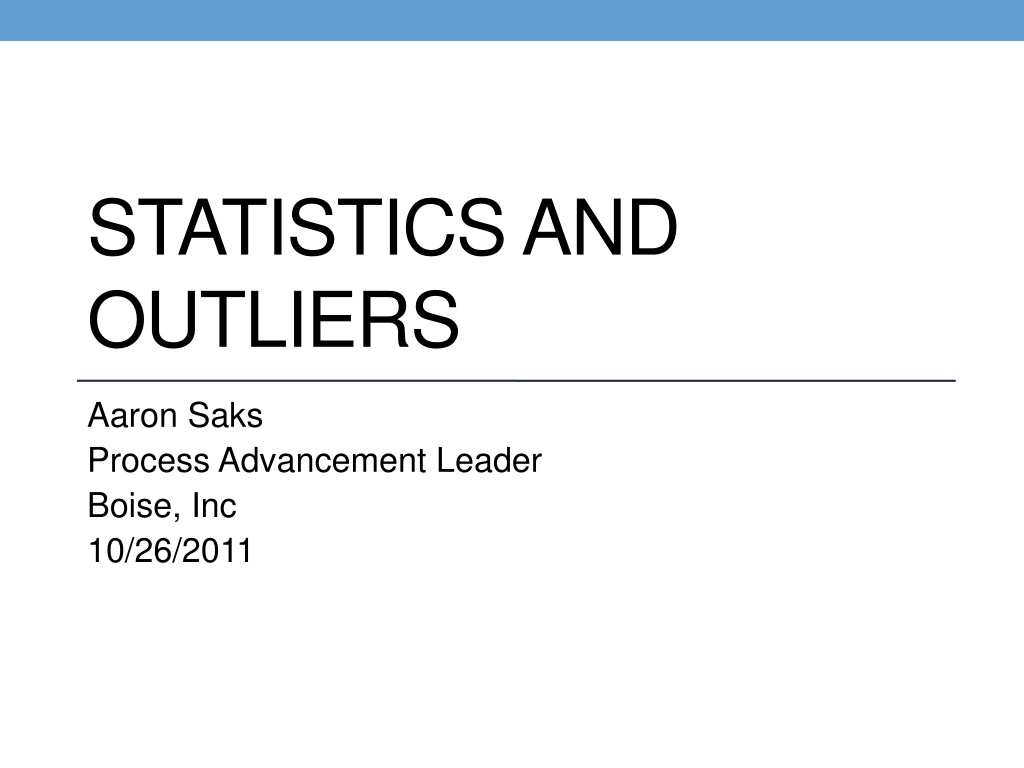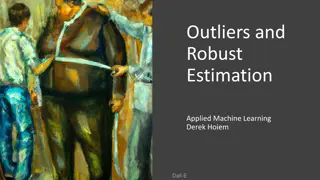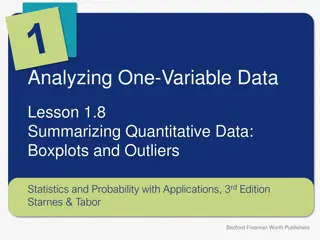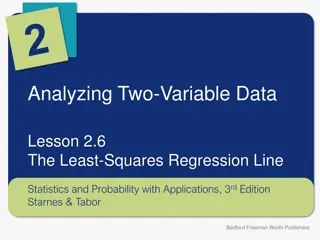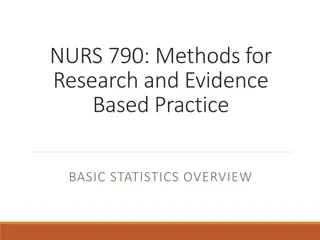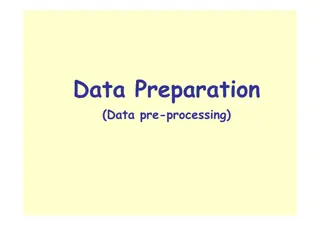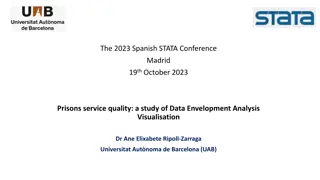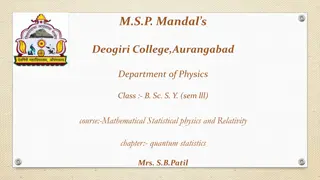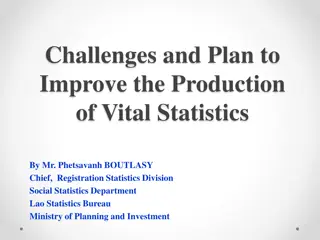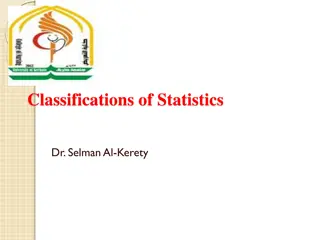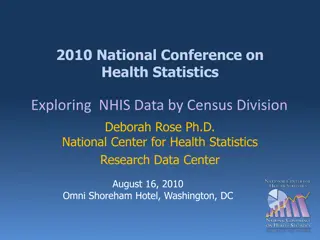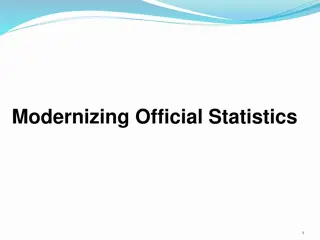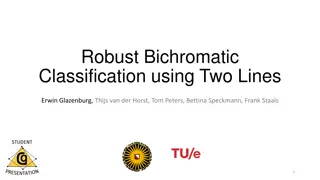Statistics and Outliers in Data Analysis
In the realm of engineering, data plays a crucial role in problem-solving and decision-making processes. Statistics offer a language through which engineers can interpret data, identify outliers, and make informed decisions to enhance process optimization and quality control. Explore the significance of statistical tools like Six Sigma methods, probability distributions, histograms, and pareto charts in empowering engineers to think more holistically about data analysis.
Download Presentation

Please find below an Image/Link to download the presentation.
The content on the website is provided AS IS for your information and personal use only. It may not be sold, licensed, or shared on other websites without obtaining consent from the author.If you encounter any issues during the download, it is possible that the publisher has removed the file from their server.
You are allowed to download the files provided on this website for personal or commercial use, subject to the condition that they are used lawfully. All files are the property of their respective owners.
The content on the website is provided AS IS for your information and personal use only. It may not be sold, licensed, or shared on other websites without obtaining consent from the author.
E N D
Presentation Transcript
STATISTICS AND OUTLIERS Aaron Saks Process Advancement Leader Boise, Inc 10/26/2011
Bio Graduated in 2007 ChemE and PSE Started career with Boise Inc, Wallula WA as a process engineer October 2008 went to work for Envoy Development April 2010 returned to Boise as Process Advancement Leader, Wallula WA November 1st2011 move to Boise, ID to become Project Manager for Boise Packaging
Statistics and Data Why is it important? Everything we really know, we know because of data. As a new engineer, we know how to apply math and logic to solve problems. We don t really know how anything works. By focusing on the data we can learn, solve problems, and teach others. There is a lot of data out there. Statistics = The language of data.
Thinking Statistically We can t just think in terms of the average . Need to think in terms of the distribution of data, and the probability of events occurring. What are good statistical tools for a new engineer? Six Sigma methods Understanding the common probability distributions and their mean and variance Understanding histograms and pareto charts Excel skills
Tear Strength 4.1% represents ~ 1640 tons below current spec Freq% Normdist% ~40 tons (0.1%) rejected for below-spec MD tear 30.0% Current Capability: 30.3 Current Spec: 32 Current Target: 42 25.0% 20.0% 15.0% % 4.1% 10.0% 0.34% 5.0% 0.0% 26.7 27.8 28.9 30.0 31.2 32.3 33.4 34.5 35.6 36.7 37.8 38.9 40.0 41.1 42.2 43.3
Ppkm: Run to Target and Reduce Variation Historically, papermakers would run in the warning all day, as long as the tests are within specification limits. This resulted in running off target, with different means run to run (Poor Quality). Needed a way to encourage ($$$) running to targets, and reducing variation within the specs. Created a variation on the classical Process Capability metric Cpk . Result a financial incentive for improving Quality.
Ppkm - Running to Target and Reducing Variation Ppkm is an example of a process performance metric. Ppkm captures both deviation from target and variation within specification limits. If Ppkm >= 1, then the process is Capable: running to target and variation is well within specification limits To improve Quality we award operators for the number for Key Product Properties that have a Ppkm value above 1.0. 30% 30% Deviation Deviation from Target from Target 25% 25% 20% 20% Upper Spec Limit Upper Spec Limit Lower Spec Limit Lower Spec Limit 15% 15% Average Average Target Target 10% 10% Out of Spec Out of Spec Paper Paper 5% 5% Variation Variation 0% 0% 30% 30% 30% 30% 30% 25% 25% 25% 25% 25% 20% 20% 20% 20% 20% Upper Spec Limit Upper Spec Limit Lower Spec Limit Lower Spec Limit 15% 15% 15% 15% 15% Average Average Target Target 10% 10% 10% 10% 10% 5% 5% 5% 5% 5% Variation Variation 0% 0% 0% 0% 0%
8 2.6 2.55 2.5 Caliper 2.45 TGT 2.4 LRL URL 2.35 2.3 Ppkm = 1.02 Here is an example of a process that has a Ppkm>1, meaning it is fully capable of meeting customer expectations. Process is running to target i.e. the mean is equal to the target Variation is well within the Specification (Red) limits.
9 2.6 2.55 2.5 Caliper 2.45 TGT 2.4 LRL URL 2.35 Running to Target Excessive variation 2.3 Ppkm = .65 2.6 2.55 2.5 Caliper 2.45 TGT 2.4 LRL URL 2.35 Acceptable variation but off Target 2.3
Outliers We spend most of our time working on the outliers: Process problems Lowering cost Increasing production Outliers exist in people too Top 20 Middle 70 Bottom 10 The future leaders of tomorrow will be from the top 20.
Thoughts for a New Engineer Understand what is expected Focus on independent learning Always speak from facts and data Effective communication creates results Focus on business results and accomplishments You don t have to be at the top to be a leader
Questions: What has been your biggest challenge? If you could go back to school what additional classes would you take? What's a typical day like? What kind of products does Boise make? How long do projects last? What ethical issues have you encountered?
